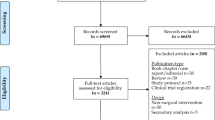Abstract
Introduction A satisfactory light source is of paramount importance during an oral head and neck examination. It has become common practice for the light source on a smartphone to be used during inpatient intra-oral examination. We determined if patients identified the use of a smartphone as a light source, during head and neck examinations, as unprofessional.
Methods and materials A clinical photograph illustrating professional errors was presented to patients as a pilot survey (n = 10); a smartphone camera flash being used as a light source was featured. Patients were then asked which aspects they considered unprofessional. Following staff training and improvements to the survey wording, the same photo was presented to patients (n = 150) as the main study.
Results Of the patients surveyed, 97% considered the use of a smartphone in the staged clinical photograph as unprofessional. They also noted: a clinician sitting on the bed (88%), clinicians not wearing gloves (81%), lack of privacy/curtain not drawn (62%), long hair not tied back (50%), a clinician's name badge not visible (23%), clinician bare below the elbows (15%) and clinician not wearing a tie (12%).
Conclusions This is the first piece of research into the use of a smartphone light source within clinical examination. The use of a smart phone light source during clinical examination was the most reported 'error' and was recognised more than a clinician not wearing gloves. Eighty-five percent of patients considered the use of a smartphone light source unprofessional. Authors, therefore, do not advocate the use of a smartphone light source in the clinical care of patients.
This is a preview of subscription content, access via your institution
Access options
Subscribe to this journal
Receive 24 print issues and online access
$259.00 per year
only $10.79 per issue
Buy this article
- Purchase on Springer Link
- Instant access to full article PDF
Prices may be subject to local taxes which are calculated during checkout

Similar content being viewed by others
References
Abogazalah N, Eckert G, Ando M. In vitro visual and visible light transillumination methods for detection of natural non-cavitated approximal caries. Clin Oral Investig 2018; 23: 1287-1294.
Dinnes J, Deeks J, Chuchu N et al. Dermoscopy, with and without visual inspection, for diagnosing melanoma in adults. Cochrane Database Syst Rev 2018; DOI: 10.1002/14651858.CD011902.pub2.
Brennan P, Brands M, Gush R, Alam P. Laser-speckle imaging to measure tissue perfusion in free flaps in oral and maxillofacial surgery: a potentially exciting and easy to use monitoring method. Br J Oral Maxillofac Surg 2018; 56: 556-558.
Koehler N, Vujovic O, McMenamin C. Healthcare professionals' use of mobile phones and the internet in clinical practice. J Mobile Technol Med 2013; 2: 3-13.
UK Government. Data Protection Act 2018. Available online at http://www.legislation.gov.uk/ukpga/2018/12/contents/enacted (accessed October 2019).
Kirk L. Professionalism in medicine: definitions and considerations for teaching. Proc (Bayl Univ Med Cent) 2007; 20: 13-16.
Lurie S, Mooney C, Lyness J. Measurement of the general competencies of the accreditation council for graduate medical education: a systematic review. Acad Med 2009; 84: 301-309.
Baxter J, Dale O, Morritt A, Pollock J. Bare below the elbows: professionalism vs infection risk. Bulletin (RCS) 2010; 92: 248-251.
Spierings E, Spierings P, Nabuurs-Franssen M, Hopman J, Perencevich E, Voss A. A cross-sectional observational study about media and infection control practices: are photographic portrayals of healthcare workers setting a bad example? Antimicrob Resist Infect Control 2015; 4: 53.
El Hadidy T, Alshafei A, Mortell A, Doherty E. Smartphones in clinical practice: doctors' experience at two Dublin paediatric teaching hospitals. Ir J Med Sci 2018; 187: 565-573.
Acknowledgements
The authors would like to thank the dental nurses, staff nurses and reception staff in the RUH Bath OMFS department who helped with data collection.
Author information
Authors and Affiliations
Corresponding author
Ethics declarations
All authors have completed the Unified Competing Interest form (available on request from the corresponding author) and declare: no support from any organisation for the submitted; no financial relationships with any organisations that might have an interest in the submitted work in the previous three years; and no other relationships or activities that could appear to have influenced the submitted work.
Rights and permissions
About this article
Cite this article
Cameron, A., Webster, J., Walker, T. et al. Patients' perception of using a smartphone light source in the clinical environment. Br Dent J 228, 849–852 (2020). https://doi.org/10.1038/s41415-020-1635-2
Published:
Issue Date:
DOI: https://doi.org/10.1038/s41415-020-1635-2



